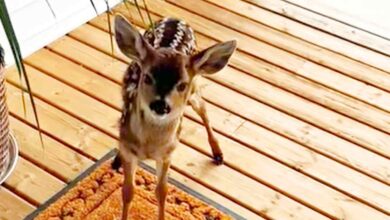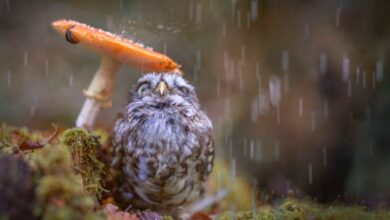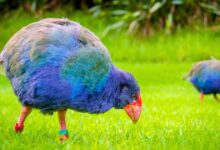Unique Bear Cub with White Head is First of Its Kind Spotted in Alberta
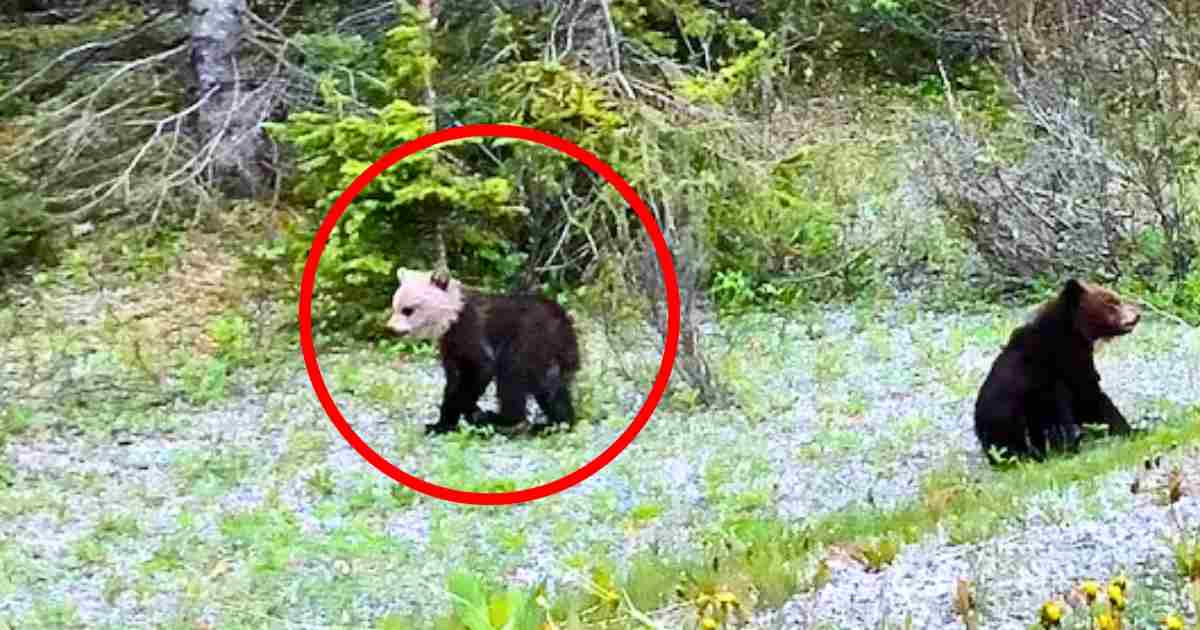
A photo captured over the weekend by a Calgary family has experts excited about what could be the first spotting ever of a grizzly with a white head but regular brown colouring on its body.
The photo was captured while the family was driving back home from the Banff National Park area Sunday, when they spotted the unique bear along with an adult grizzly and another normally-coloured cub.
“As we drove by I said to my husband, ‘That cub has a white head,’” Julia Turner Butterwick said. “I had just kind of snapped the picture quickly, and when I zoomed in on the photo I realized he had a fully white head and a brown body.
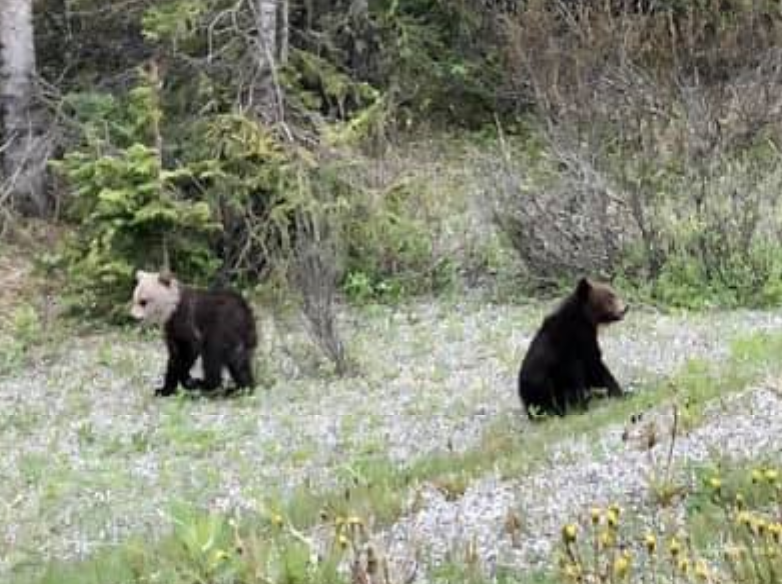
“We saw lots of other bears on our drive (Sunday). We saw about four black bears and three grizzly bears,” she said. “It was a very active day, but I have never seen anything like this. That little guy is pretty special.”
Several bear experts confirmed to Global News the cub was a grizzly, but they had never seen or even heard of one with similar colourings.
“I’ve never seen anything like it. Nor have I seen a picture of one,” Jeff Gailus, a conservation writer and grizzly bear expert, said. Wildlife expert and zoologist Paul Pauquet agreed it was an “exceptionally unique” spotting.

“I have seen and photographed grizzly bears with light blond (but not white) heads and darker coloured bodies,” Pauquet said.
“Of course, this new sighting is of increased interest given recent sightings of a white grizzly bear in Banff. The obvious question is whether these two bears are related,” he said.
That other completely white grizzly bear, known as Nakota by locals, has also made headlines recently as experts caution the public interest in that rare bear.
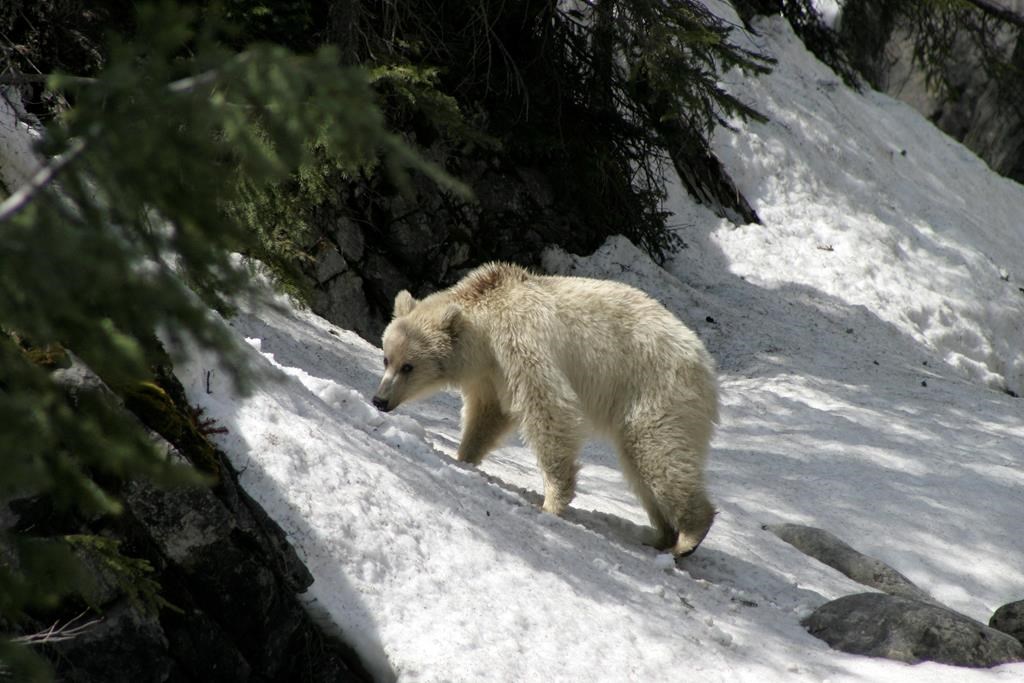
Pauquet said that the little cub with the white head was likely caused by an atypical recessive gene, but that gene would have to be present in both parents to show up in a cub.
“In theory, the gene could be present but not exhibited in the parent bears and sibling or other relatives,” he said, adding that he wonders if the white colouring that has shown up in at least two Banff-area grizzlys now means the bears in that area are becoming more isolated from other populations.
“The likelihood of the gene being expressed would be enhanced in isolated or contained population of bears, such as an island population, because opportunities are increased of a bear mating with a related bear that also carries the gene,” he said.

Gailus said that he believes the half-and-half cub is even more extraordinary than the more well-known three-year-old all-white bear. “Unless it (the cub) got into a can of white paint, it’s obviously a very rare colour phase, perhaps even rarer than the all-white grizzly present in Banff.
Global News is not identifying the exact area where the partially white cub was spotted. Turner Butterwick said she also reported the sighting to Parks Canada. On Tuesday, Parks Canada confirmed to Global News it was aware of the unique bear and has been monitoring the family.
“The young of year grizzly cub, its sibling and mother are known to Parks Canada and have been spending their time between Banff and Kootenay national parks,” an emailed statement said.
The agency said that it has marked the mother bear as female grizzly 143, and that bear also has a sibling in the Lake Louise area, female grizzly 142. Female grizzly 143 does not have a radio collar, which is typically used for research purposes or if an animal frequents highly populated areas, which she has historically not done.
While Parks Canada did not have additional photos of the cub, it said it is believed to have an unusual “blond head and chest.” When spotting wildlife near roadways, Parks Canada recommends people do not leave their vehicles or interact at all with the animals.
“When visitors see wildlife on other roads, stop only where legal and safe to do, stay in your vehicle and give the animal space. Bears and other wildlife that become comfortable around people and roadsides are at greater risk of being struck by a vehicle,” it said. Feeding animals in national parks is also illegal, with fines up to $25,000.

